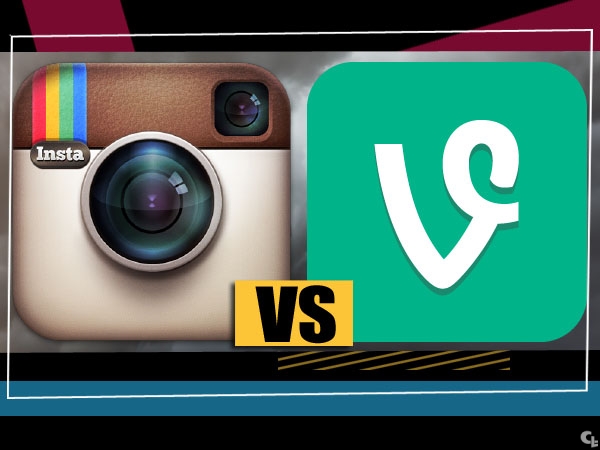As we’ve discussed in some of our previous blog posts, at its core content marketing is fairly simple: we make things that encourage people to engage with our brand. We trade content for their attention, and in doing so build a genuine relationship with our following that is non-exploitative and transparent in nature. As such, our job is to go where the people are so we can continue to meet their unfulfilled needs. Understanding what modes of production the market is moving towards next is an important part of being a successful content writer or producer, so it’s critical to keep yourself abreast of breaking news.
Text, image, and video are the three primary mediums that content is distributed through online. Of these, video represents the “wild west” for content marketing. Streaming video views increased 100% in 2012, and video ads were the fastest growing category of online advertising. Branded video conversion rates were up a massive 91% from Q3 to Q4 of 2012. All of this data suggests that leaving video out of a well-rounded content strategy is a huge mistake.
This is what opportunity looks like
In the world of short-form video, Vine has long been the reigning king. Vine is a mobile application owned by Twitter which allows users to take six second videos which include sound. The videos immediately loop once they hit their end, and have become something of a web sensation. Brands seized upon the opportunity, and began finding ways to maximize their six seconds in the spotlight.
Nothing lasts forever, and it was inevitable that some other savvy company would identify the massive success of the short-form video and create a viable competitor. Enter Facebook.
The News Breakdown
As you may be aware, Facebook owns Instagram, a site where (if you’ve been living under a rock for the past few years) users can upload, edit, and share their personal photos. Apparently, dominating the mobile picture space simply wasn’t enough, and Facebook recently expanded Instagram to allow users to upload short videos.
It’s the fight of the century!
As one might expect, this immediately resulted in enormous buzz. Twitter and Facebook have been locked in something of a social media cage match, and Twitter had gained an edge in the minds of many over the past few years. The launch of Instagram Video (IGV) was a huge power play by Facebook that clearly cuts into Vine’s market share.
IGV includes a number of features that appear to put it ahead of Vine from a production quality standpoint. IGV videos are capped at fifteen seconds, and users can apply a number of filters similar to Instagram to increase the visual appeal of their short works. Rather than looping, they have a clear beginning and end, and will be plugged right into Facebook’s huge network of offerings. The headline “Vine is Dead” has started to crop up all over the internet, and there are legitimate questions as to its long-term viability.
Is Vine Obsolete?
This leads to an obvious question for content marketers looking to get maximum return on their investment in a given platform: is Vine truly dead? Should we continue to produce content for Vine and monitor the site for new trends, or has it gone the way of the dinosaur?
We live in a culture of hyperbole, and it’s really easy to throw a headline like “vine is dead” up on the top of an article. It’s provocative, and will likely get some good traffic. But it’s also an incredible oversimplification of a much more complex topic. These are two unique services that provide value to their users in different ways. GIFs are gaining in popularity, and Vine is basically an instant GIF-maker. Vine held the #1 spot in the iOS app store for a very long time, it’s a stunningly popular application that users aren’t just going to abandon at the drop of a hat.
It’s really not that bad
Simply put, why not both? One of these systems offers a six second looping video, the other offers fifteen second non-looping. These entities are backed by the two most powerful social media sites in the world. Incredibly smart people are supporting both platforms, and both are likely to continue to provide their users with new, fresh experiences and meaningful ways of interacting. They’ll both evolve over time, but the presence of IGV doesn’t remove the opportunities presented by Vine to the smart content marketer, at least in the short term.
In fact, the existence of a strong competitor in the market will likely spur both Vine and IGV to continue to innovate, leading to new services and use cases that will provide content marketers with more fodder for creation than ever before. In fact that’s already happening, as Vine had one of its most significant app updates shortly after IGV’s launch. Video content users and producers are going to have to carefully select which video works best for a given platform, allowing the more skillful content producers to get a leg up. Vine is not dead, and may even end up allowing for more marketing opportunities than before if the introduction of IGV increases the overall use of video content.
How can companies branch out into either of these platforms effectively?
As long as Vine continues to hold a considerable percentage of the short-form video market share we need to understand how to best differentiate our content between these two unique platforms. It’s important to understand why people go to different video sites. This is a big topic, but fundamentally users access a site like YouTube because they want to be entertained by video, not because they want to find products or services to purchase. For instance, “Funny Cats” receives about the same volume of searches through YouTube as it does through Google in a given month, but a serious search term like “Insurance” drops from 55.5 million searches a month through Google to under 10,000 on YouTube over the same time period. Vine and IGV are much the same; users are there to be entertained. By focusing our content on entertainment and user-friendly information rather than a sales pitch, we can most effectively take advantage of these different platforms.
Here’s the breakdown on what you should consider putting where, keeping in mind the critical focus on entertainment:
Start Using IGV For:
·Long(er)-Form Video: The key differences between Vine and IGV are simple, IGV is longer and doesn’t loop. This means that the IGV medium lends itself more to storytelling with a clear beginning and end. Corporate stories and customer testimonials should fit nicely on your IGV account.
·Setting the Mood: IGV currently has a clear leg up in one specific area: it provides a number of features that allow the user to create a more professional style of video. With its filters and “Cinema” image-stabilization tool, which smoothes out shaky videos, content producers can now create an emotional experience through the instant-video medium.
·Reinforcing Your Facebook: Facebook owns IGV, and there will be numerous opportunities for cross-promotion between these different platforms. If you already have a strong Facebook following, or if you’re looking for ways to beef up your Facebook presence, creating content for IGV is a great way to go.
Keep Using Vine If:
·Stop Motion is Your Thing: Smart brands have used Vine to create unique stop motion videos that showcase themselves in various creative ways. Stop motion plays very well through Vine’s medium, and allows companies to communicate a significant amount of brand information in a very short window of time. Etsy’s videos are a great example of this.
·You Love to Loop: Vine’s looping videos allow content marketers to create unique, long form gifs that include sound. These loops can be leveraged in creative ways, and are often perfect for funny visuals or product demonstrations.
·You’re a Twitter Fanatic: Vine is backed by Twitter, and there’s a lot of hashtag integration and cross-promotion that’s possible between the two sites. If Twitter is your brand’s social media platform of choice, then Vine will continue to present the most opportunities for engaging your following.
IGV and Vine present separate use cases and provide content marketers with different parameters to operate in. Rather than exclusively focusing on one or the other, you’ll maximize your response by leveraging both. Just as with using both Twitter and Facebook to promote your brand, creating material for both Vine and IGV will give you the best results.











